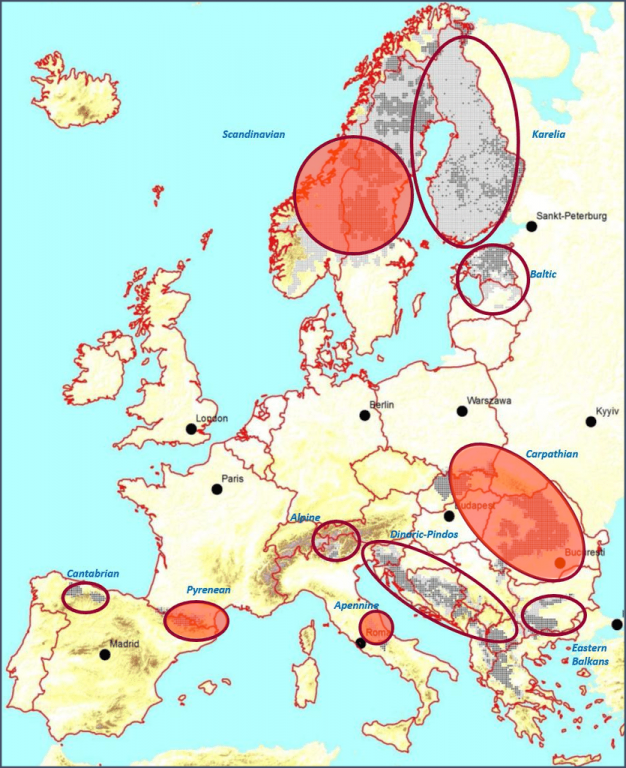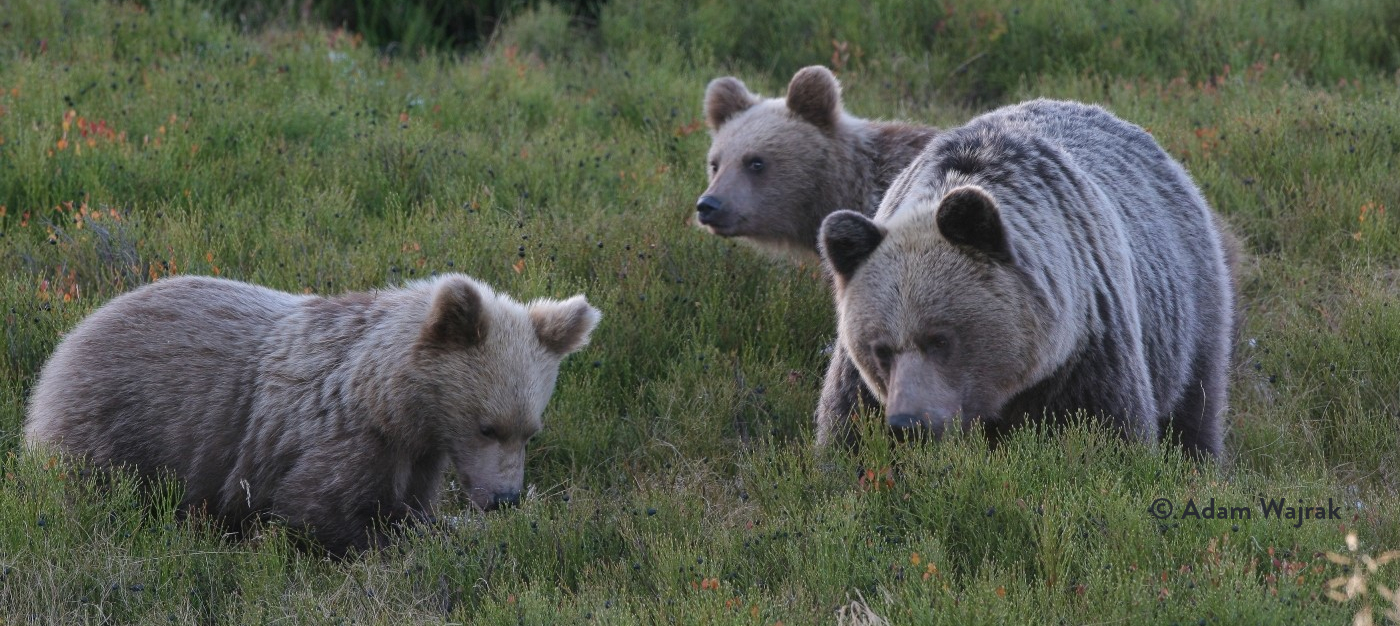Biodiversa (2017 - 2020) : BearConnect
Functional connectivity and ecological sustainability of European ecological networks : a case study with the brown bear
Team involved : BIOM
Platform involved : PASTIS
Main contact person : Wilfried THUILLER, Marta DE BARBA (LECA, CNRS)

In this project, we are focusing on the largest and most iconic terrestrial carnivore, the brown bear (Ursus arctos) to investigate the degree to which existing ecological networks, including national protected areas and the Natura 2000 network, ensure landscape functional connectivity (the degree to which landscapes facilitate the movement of individuals and associated genes) and ecological sustainability (the ability of landscapes to support resilient populations) at different scales in Europe, and to provide practical recommendations for their improvement.
The main objective of this project is to evaluate the functionality of ecological networks, including national protected areas and the Natura 2000 network, for brown bears in Europe, at the local, regional and European scales. Our specific objectives can be found below :
- Evaluate functional connectivity and factors influencing brown bear distribution, movements, and effective dispersal in the current landscapes and future landscape scenarios.
- Understand the role brown bears have in ecosystems, with focus on trophic interactions and associated ecosystem services.
- Assess the effectiveness of the existing system of ecological networks for supporting the resilience of brown bear populations and associated ecosystem services.
- Provide spatially explicit guidelines for the improvement of ecological networks to be used in landscape connectivity planning for the conservation of brown bears and other species in Europe.
Partners :
- LECA - CNRS - Université Grenoble Alpes - Université Savoie Mont Blanc (Laboratoire d’Écologie Alpine)
– Wilfried THUILLER
– Marta DE BARBA
– Laura J. POLLOCK
– Julien RENAUD
- Université de Goettigen - Allemagne
– N. BALKENHOL
- INCDS (National Institute for Research and Development in Forestry "Marin dracea) - Roumanie
– A. FEDORCA
- Institute of Nature Conservation, Polish Academy of Sciences - Kraków, Pologne
– N. SELVA
- University of South-Eastern Norway - Norvège
– A. ZEDROSSER
- Université de Rome "La Sapienza" - Italie
– Luigi MAIORANO
 La fédération
La fédération Intranet
Intranet










